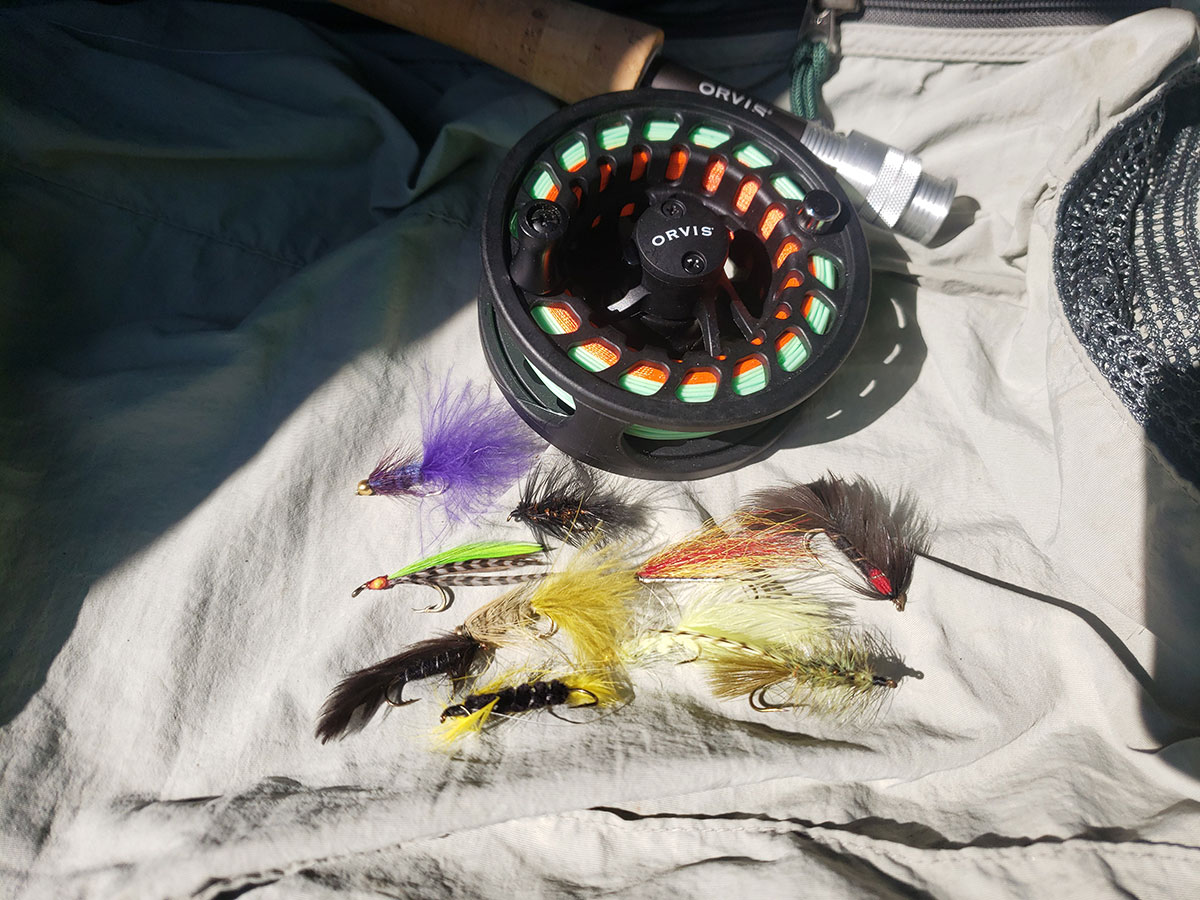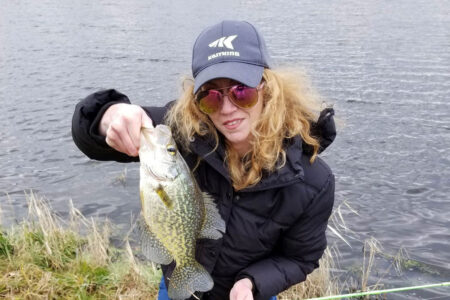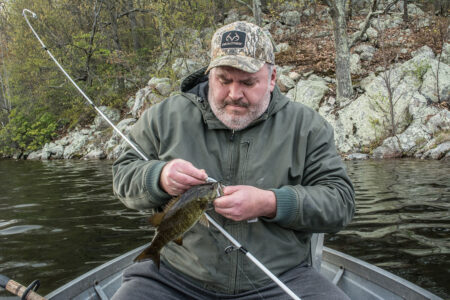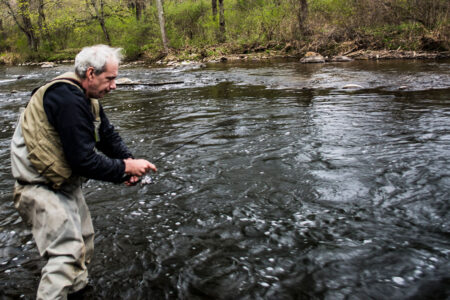All manner of gamefish from trout to bass can be had in late fall at your local lake or pond, and the fly rod is the perfect tool to tempt them.
Pong the domain of the spinning legions, the smaller still waters, especially those stocked with trout during October and/or November, are prime venues for the long rod. Of course, not to be overlooked in these swims are the likes of largemouth bass, pickerel and panfish, all which will respond to a well-presented streamer or nymph or wet fly respectively.
Make no mistake about it; I prefer the spinning modus operandi when it comes to probing the more diminutive still water swims, but there are occasions when 1) showing the fish something different will elicit strikes because they’ve been pounded front-and-center by the standards, 2) trout and panfish in particular are keyed on a late midge hatch or on any straggler grasshopper, cricket or ant terrestrials, and 3) it’s just plain fun to fish with a fly rod, especially when you’re doing the catching.

The catalyst to including a proletarian 8-foot, 5-weight outfit to the Thanksgiving Week ordnance unfolded a decade or so ago when the recently-released rainbows wanted nothing to do with baits, be they paste, preserved or live. Even a spinner, then a spoon, went untouched. About 50 yards down the bank of the suburban swim where there was some open room for a back cast, a Simms vest-clad long-rodder was enjoying a tussle with a trout, which he promptly released. Less than five minutes later he was into another, and then another. Not one to leave it alone, I made the approach.
“Still bugs out there,” he said, “and that’s what they want.” Easy enough. His No. 10 Woolly Worm wet fly, red tag and all, obviously struck a hunger or curiosity chord with the roving rainbows in the 6-acre pond.
Small Ball
Simple is as simple does when it comes to late fall’s still-water fly rod bounty. Sure, the larger, more wide open reservoirs offer more in the way of big fish. Big winds and deeper waters, too. Now you’re talking 9- to 10-foot rods, shooting heads to get the necessary added casting distance, 7- to 9-weight lines, and flies that one would believe belong in a bird cage.
A smaller venue can, predicated on shoreline access, be fished much more thoroughly than a big water. Should a ‘yak or canoe be a legal float, all the better.
This is 5- and 6-weight, intermediate (slow sink tip) on 7-1/2 to 8-1/2 foot rod length water. Leaders are 7-1/2 feet, only to 9 feet should the water be gin clear and the fish heavily pressured. Tippets will range from 3X to 5X, and fluorocarbon will give an edge under eyeball-close inspections before a commitment is made. The casts are close, the retrieves a hand-twist in the case of nymph patterns or slow-to-medium stripped for wets and streamers.
Trout & Panfish
Go with wet flies, nymphs and streamers for the cruising salmonids, with the former pair apropos for the palm-full sunfish and wrist-length crappies that are staging in pods and schools. The older-than-silk line standards still do the job, with variations thereof also appealing to today’s targets. For wets, it’s the meaty Nos. 10 Black Gnat, Royal Coachman, Woolly Worm, and Coachman. For nymphs, the Nos. 8 and 10 Zug Bug, Montana, and Tellico will get the job done. Woolly Bugger streamers, Nos. 6-10, especially in the brighter colors, are the trigger for rainbow wreckage. Figure hot pink, white, and chartreuse.
Bass & Pickerel
The “meat eaters” will more eagerly pursue a mouthful, so it’s an easy upping the streamer game to Nos. 2-4 in the aforementioned Woolly Bugger colors as well as the same sized standards in the Black Ghost, Olive and Rooster Matuka, and Mickey Finn patterns. Pulling and fast twitching these over sunken and retreating weeds will goad strikes.
In lieu of wire leaders when pickerel are the primary target, opt for 1X and OX tippets. The aquatic assassin has no idea what fishing lines or leaders are, and being a rear shot killer, it’s a 95% chance that the hit-from-behind will result in a lip or jaw hook penetration.
Bass? As with yours truly, they’ll eat no matter what.




